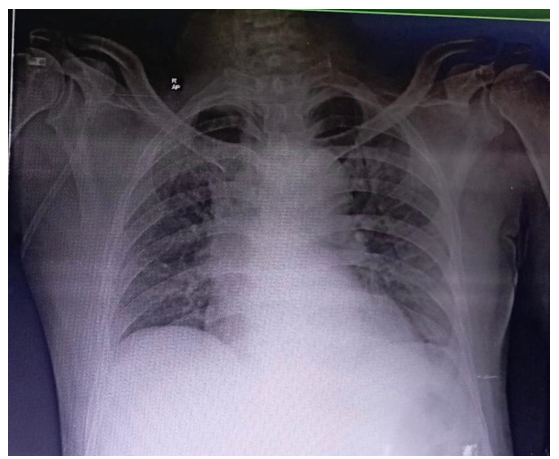Chest X-ray findings in symptomatic patients positive for Covid-19
Abstract
Background: The flare-up of Covid started as pneumonia of obscure reason in December 2019 in Wuhan, China, which has been currently spreading quickly out of Wuhan to different nations. On Walk 11, 2020, the WHO reported Covid as pandemic. Covid is believed to be expanding in Pakistan. The principal instance of Covid was accounted for from Karachi on February 26, 2020, with assessed people of Pakistan as 204.65 million. Progressively, the infection spreads into different locales across the country.
Objective: To find out the Chest X-ray findings in symptomatic patients positive for Covid-19.
Methodology: A descriptive study was conducted at Department of radiology, Farooq Hospital Lahore. 150 patients of different age groups were enrolled in this study with convenient sampling technique. Out of 150 patients 85 were males and 65 were females and they were with the history of cough, smoking, loss of smell, low oxygen saturation, and hypertension and remaining were normal. We included only those patients in this study which were symptomatic and have positive PCR of Covid-19 virus while the asymptomatic were excluded.
Results: All 150 patients were with the history of positive PCR of covid and were symptomatic. 85 (56.7%) males and 65 (43.3%) females were enrolled in this study. Out of 150 patients 54 (63%) patients were with the history of fever, 103 (68.7%) were with the history of diabetes, 54 (36%) were with the history of hypertension, 57 (38%) were with the history of smoking, 69 (46%) were with the history of cough, and all patients were with the history of loss of smell. In this study different age groups were selected. The mean value of age was 1.313 and SD ±16.078. On X-ray 87 (58%) shows Air Space Opacification, 98 (65.3%) shows Inflammatory Process, 46 (30.7%) shows Ground Glass Appearance, 52 (34.7%) shows Consolidation, 9 (6%) shows Pleural effusion, 15 (10%) has cardiomegaly, 15 (10%) has bronchitis and 8 (5.3) has pulmonary edema.
Conclusion: The chest X-ray is the basic modality for identifying patients with COVID-19 pneumonia and it is especially useful due to its low cost and low radiation exposure. Early changes in the lung parenchyma and consolidation and hazy pattern can be detected and that will help to reduce the rate of hospitalization due to Covid-19.
Key words: Chest X-ray, Covid-19
